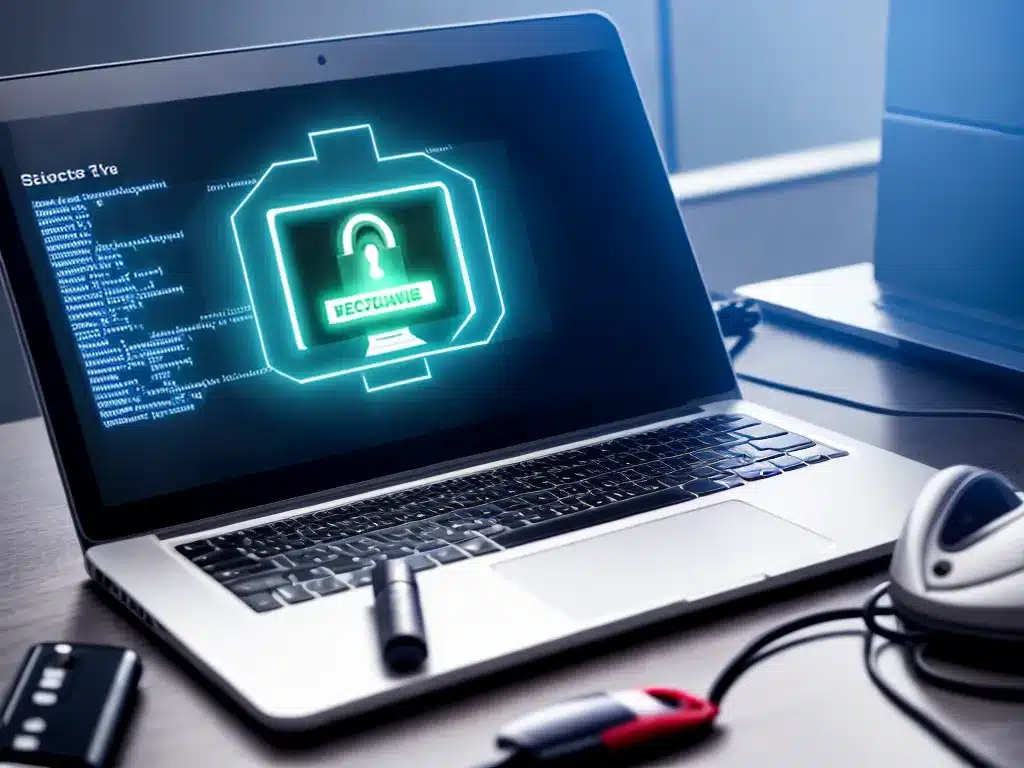
Why Regularly Updating Software Is Vital For Data Security
Introduction
Keeping software up-to-date is one of the most important things a business can do to protect its data and systems from security vulnerabilities. Outdated software is a massive risk that leaves companies open to data breaches, malware infections, and other cyber threats. In this article, I will explain why regularly updating software is vital for data security.
The Risks of Using Outdated Software
Using outdated software poses several risks:
Exposure to Known Vulnerabilities
Older software versions often contain weaknesses and flaws that hackers can exploit to gain unauthorized access. When new vulnerabilities are discovered, developers release patches to address them. However, if you don’t install those updates, your systems remain vulnerable to attack.
Increased Likelihood of Malware Infection
Malware developers frequently target known software vulnerabilities as an initial entry point into systems. If your software is not updated, the chances of a successful malware infection increase dramatically. Ransomware attacks in particular often leverage outdated or unpatched software to infiltrate networks.
Non-Compliance with Security Standards
Many industry security standards and regulations require that software be kept up-to-date. For example, the Payment Card Industry Data Security Standard (PCI DSS) mandates installing vendor-supplied security patches within one month of release. If software is not updated regularly, organizations risk falling out of compliance.
The Importance of Regular Software Updates
There are a few key reasons why software updates need to be an ongoing, regular process rather than a sporadic event:
New Vulnerabilities are Constantly Being Discovered
Cybersecurity threats evolve rapidly, with new vulnerabilities found in software on a daily basis. The only way to stay on top of these threats is to install updates as soon as they become available. Failing to do so will inevitably leave gaps in your security.
Updates Fix More than Just Security Issues
While security fixes tend to get the most attention, software updates also include fixes for performance issues, bugs, and new features. All of these enhancements together serve to improve your systems and ensure optimal operation.
Update Frequency Varies by Vendor
The frequency with which vendors release updates varies widely. While some push out updates daily or weekly, others may go months between releases. To account for these inconsistencies, checking and installing updates regularly is important.
Best Practices for Software Update Management
Maintaining a robust software update management program requires following a few key best practices:
Automate the Process
Relying on manual update checks is inefficient and leaves room for human error. Automated patch management software streamlines the process and ensures updates get installed.
Perform Updates Outside of Business Hours
Since software updates often require system reboots, conducting updates during evenings, weekends or other downtimes helps minimize workflow disruptions.
Test Updates Before Deploying
When possible, first test software updates in a staging environment before rolling them out to verify they do not negatively impact systems or applications.
Monitor for Available Updates
Actively monitor vendor sites and mailing lists to stay informed about the release of new updates. Maintaining awareness ensures you can take swift action when critical patches become available.
Prioritize “Critical” Updates
Review patch details and prioritize deployment of those labeled critical or security-related. This helps ensure the most serious vulnerabilities get addressed immediately.
The Impact of Neglecting Software Updates
Failing to keep software updated can leave companies susceptible to severe, costly consequences:
- Data breaches – Hackers exploit vulnerabilities to steal sensitive customer and business data.
- Ransomware attacks – Malware encrypts data and extorts businesses to get it back.
- Regulatory fines – Outdated software leads to non-compliance with security standards.
- Lawsuits – Customers and partners take legal action after data exposure.
- Reputation damage – Public perception suffers after high-profile breaches.
These examples demonstrate the vital role software updates play in protecting businesses from cyber threats. The risks and potential costs of neglecting updates far outweigh the relatively minor time investments needed to maintain secure, up-to-date software.
Conclusion
Regularly updating software is a fundamental component of cybersecurity. Outdated programs contain vulnerabilities that hackers actively try to exploit. To protect systems and data from compromise, companies must commit to continuously installing vendor-supplied patches and updates as they become available. Automating updates, testing them first, and prioritizing critical fixes helps streamline the maintenance process. By establishing consistent update practices, businesses can cost-effectively minimize their exposure to cyber attacks. The threats associated with neglected, insecure software make implementing strong update management policies and procedures an essential security safeguard.












